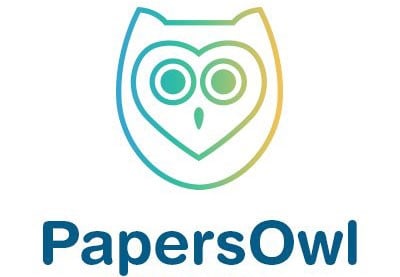
The ability to draw conclusions based on previous experience, common sense and prior knowledge is one of the basic characteristics of all human beings, which allows us to communicate, create, think, learn, and progress. With the introduction of new technologies in education, young people are increasingly encouraged to improve their knowledge in a quality way. The key to modern blended learning is to change the way the curriculum is distributed, from the traditional teaching to the comprehensive involvement of the senses, which leads to the emotional acquisition of content. How does the classroom become an interesting and inclusive place that creates a sense of belonging for the 21st century students and what are the positive and negative effects of technology on education?
Personalized e-learning
By applying the latest e-learning technology, personalization is also enabled, which is a step forward against classical methods that presumed all students in the classroom were listening to the same lecture and doing the same tasks. With personalized e-learning, the students get degree programs adapted to his previous knowledge and learning style that suits him best. Moreover, the inclusion of multimedia materials (video, audio, text) and interactive activities (exchange of messages between teachers and students, interaction, the application of discussion forums, interactive self-testing, etc.) enabled a new dimension in the process which was not easily achievable in classical teaching. We will also discuss new tools such as Grammarly, Zoom, and more a bit later.
The access of appropriate methodology and adapted pedagogical methods, in addition to the impacts of technology on education is equally important . This is an area to which we will pay much more attention in the coming period. The entire learning process should be interesting, understandable, and challenging. Students should be happy to discover and research novelties and things of their interest, but also make use of what is necessary for the job they are preparing for.
New Educational Technology
The New Media Consortium report Horizon 2014 edition lists six information technology achievements that will have a major impact on the education system. Some of them are still in their infancy; others are well established; and the third of a somewhat abstract nature to both schools and students.
We should not ignore the fact that technology plays an important rule and helps students. There are a large number of extremely useful and quality applications and sites that can respond in a very desirable way to the needs of both teachers and students. A teacher should refer students to such tools and use them themselves. We cannot stop or ignore the positive impact of the digital age, and we need to work together and adapt to the needs of students and the challenges of the new age.
Let’s briefly elaborate applications that are synonyms for a positive impact of technology on education.
Zoom
If you are one of the tens of millions of people currently working from home or out of school due to the coronavirus pandemic, it is likely that you are one of the users of the Zoom application and that you quickly became acquainted with video conferencing software. But in addition to becoming a means of facilitating business communication, Zoom has also made it easier for friends to organize their virtual, fun hours, and for families to stay in touch while the coronavirus causes us to be separated for a long time. Whatever the reason for using it, Zoom is a model example of how technology simplifies student life and is everywhere at once.
PapersOwl
As a dedicated writing service, papersowl.com has been active for more than a decade helping students worldwide to craft exceptional essays and other types of academic paper. The service relies on 500+ proven native-English speakers that offer high-quality papers at an affordable rate. Also, they have their own blog in which they share various guides and tips for the quality writing of different types of papers. And also offer free tools that help in quality academic writing. Students using this service not only eliminate stress but also receive articles with trusted references and free of plagiarized content that you could find using search engines.
Copywritely
Copywritely is a content optimization tool to check for keyword inclusion, keyword redundancy, grammatical errors, and overall readability of content. For prospective writers, this education technology enables them to create top-notch content and get a starting advantage over the competition.
Grammarly
Grammarly is a great writing tool that helps you check for errors in English text. Detects grammatical and punctuation errors in two modes – basic and advanced. It also provides suggestions and suggestions on how to correct these errors. This application is useful both for those with advanced knowledge and for those who have a basic knowledge of English.
Coursera
A site that offers online courses and makes learning accessible and affordable to anyone, this is a good example of how technology helps students learn new skills required to position themselves better in a highly demanding job market. You need to choose from the list of courses that interest you including medicine, programming, arts, history, etc.
Negative Impacts that Require a Further Analysis
The application of e-learning facilitates the process and brings valuable information to any corner of the world. However, despite the undoubtedly large number of advantages, this way has its drawbacks, which should certainly be taken into account when considering the negative impact of technology on education. These shortcomings are on the one hand related to the characteristics of the entire concept, while on the other hand some of them are related to the characteristics of potential participants in such programs.
Various indicators dealing with how technology affects education show that online courses reduce the number of engaged people and drastically reduce costs, while at the same time enriching the teaching process and ensuring a better quality of its service. Still, numerous participants in reputable studies emphasized the feeling of “personal isolation” during self-taught activities. Moreover, a high-school student respondent warned that the internet does not connect people but also separates them. That respondent felt that he was losing some of his faithful friends by excessively using the Internet.
Finally, current ICT tools are often not accessible and therefore special attention should be paid to older people with physical disabilities, disabilities and very little experience with ICT. Such difficulties can prevent and demotivate them in effectively mastering ICT skills.
Conclusion
Intense scientific and technological advancement, the shift to the information society, and the increase of new conversance in all fields have inflicted new requirements and core state standards. Respecting such conditions, contemporary studying enables the increase of the reach of knowledge, and one of the responsibilities of the school is to tune the content of courses with the demands of systematic and technical progress. With the guidance of modern technology in education such as online learning software or computerized multimedia labs, it is possible to more consistently perform, enhance, and renew the positive effects of technology on education.









